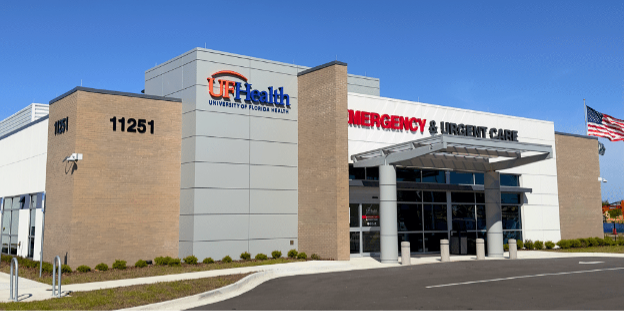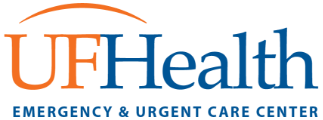Workout Woes: Common Exercise Injuries and Treatment
- Category: General
- Posted On:

New year, new you. Starting a new exercise routine has huge payoffs when you stick with it for weeks and months at a time. Staying active is one of the best things you can do for your health. But let's face it, sometimes we get too enthusiastic and push our bodies beyond their limits. Listening to your body and recognizing when to dial it back or seek help is essential.
Though common, not all pain and strains from the gym are normal. Some common exercise scenarios could be warning signs of a bigger problem.
Muscle Soreness After Lifting Weights
No matter your gender or age, lifting weights is a great way to increase your resting heart rate, lower body fat, improve balance and motor coordination, and enhance joint stability. For a total-body workout, it's recommended to lift weights for twenty to thirty minutes three days a week.
While weightlifting can be rewarding, it also comes with risks. While muscle soreness is normal, sharp pain indicates that you may have overdone it. If you're experiencing persistent pain or swelling or can't move the affected muscle or joint, these could be signs of a more serious injury, like a strain or sprain, that needs medical attention.
When to Go to Urgent Care for a Muscle Strain
Muscle strains can be uncomfortable and complicate your daily life, but they often heal on their own. However, some strains require medical attention.
Consider going to urgent care if:
- It's challenging to perform basic tasks, like walking or getting out of bed.
- Over-the-counter pain relievers don't help.
- Pain isn't going away after a few days or getting worse.
- Pain radiates down the arms or legs.
- Symptoms include numbness or tingling.
- You can't move the area.
- You have numbness or tingling.
- You heard a "pop" when the injury occurred.
Chest Pain While Running
We all know that running is good for the heart and lungs. Within the first minute or so of any run, your pulse increases as your heart beats faster to pump enough oxygenated blood to your working muscles.
Some runners notice mild chest tightness or heaviness when they first head out for their run but feeling chest pain when running can be confusing and concerning. Every year, the CDC reports about eight hundred thousand Americans have heart attacks, including about six hundred thousand for the first time.
When To Go to the Emergency Room for Chest Pain
While chest pain can result from something minor like muscle strain or acid reflux, it's crucial to rule out more serious conditions, like heart problems.
Consider seeking emergency help if:
- Faint, lightheadedness, or an irregular heartbeat
- Pain is accompanied by other symptoms such as shortness of breath or nausea
- Pain is severe
- Pain lasts more than a few minutes
- You have a family history of heart disease or sudden cardiac death
Early Signs of a Heart Attack
There are early symptoms of a heart attack that may occur in fifty percent of all people who have heart attacks.
- "Stuttering" chest pain is mild chest pain or discomfort that comes on and then dissipates one or multiple times
- Anxiety, confusion, or fear
- Breathlessness
- Feeling faint or dizzy
- Nausea or vomiting
- Shoulder, neck, or jaw pain
- Sweating
Chest pain is often related to heart disease. Chest pain symptoms due to a heart attack or another heart condition may include:
- Cold sweats
- Fast heartbeat
- Fatigue
- Heartburn or indigestion
- Lightheadedness
- Nausea
- Pain that spreads to the shoulder, arm, back, neck, jaw, teeth or upper belly
- Pressure, tightness, pain, squeezing or aching in the chest
- Shortness of breath

Sprained Ankle While Jumping
Jumping is a common part of sports and exercises, from basketball to box jumps. It's easy to lose your footing and land the wrong way on your foot, leading to a strain or sprain of an ankle. Many athletes experience ankle sprains. They start off as just a tweak, a slight pain that we tend to ignore. However, the twinge of pain is often caused by sprains or fractures from sudden injuries.
A sprain is an injury to a ligament, the tough band of tissue that connects two or more bones at a joint. When a sprain happens, one or more ligaments are stretched or torn.
Signs of a Sprain
- During injury, you may hear or feel a pop
- Pain or discomfort when using the sprained joint
- Some swelling or bruising
Is a Sprain an Emergency?
Sprains are painful, but a visit to an emergency room is not usually required. Mild sprains respond well to home treatment. However, other injuries like fractures can also occur if the sprain is severe.
When To Go to Urgent Care for a Sprain
A sprain can occur from overuse or a fall, and it's not something to take lightly.
Consider going to urgent care if you have:
- A noticeable decrease in grip strength
- Can't move or bear weight on the sprained joint
- Feeling of instability
- Numbness in any part of the injured limb or joint
- Persistent pain
- Swelling at the joint
Targeted pain can also result from long-term problems and repetitive stress on the ligaments.
Ignoring these symptoms can lead to long-term damage, so it's important to seek help soon after an injury.
Be Smart When Starting a New Exercise Routine
Federal guidelines for adults recommend at least 150 minutes of moderate-intensity physical activity a week. You might split that into 22 minutes a day or 30 minutes a day for five days. You can use any combination that fits your schedule.
No matter what exercise you're into, knowing your limits and listening to your body is always important. Don't ignore pain because it's your body's way of telling you something is wrong. Warm up properly before exercising, stay hydrated, and use the correct techniques to prevent injuries. And most importantly, if you're ever in doubt, don't hesitate to consult a medical professional.

Get Care for Accidental Injuries at UF Health Emergency & Urgent Care Center
At UF Health Emergency & Urgent Care Centers, our primary goal is to provide the residents of Northeast Florida and Southeast Georgia with exceptional service and the proper billing for the care they need. Our combined emergency room and urgent care is fully equipped to handle everything from allergies to fractures to chest pain, with on-site labs, CT, ultrasound, and X-ray, all under one roof. The ER and urgent care centers are open 24 hours a day, 7 days a week. No appointment is necessary — just walk in!
Find the UF Health Emergency & Urgent Care Center in Jacksonville nearest you at https://euc.ufhealthjax.org/locations.
